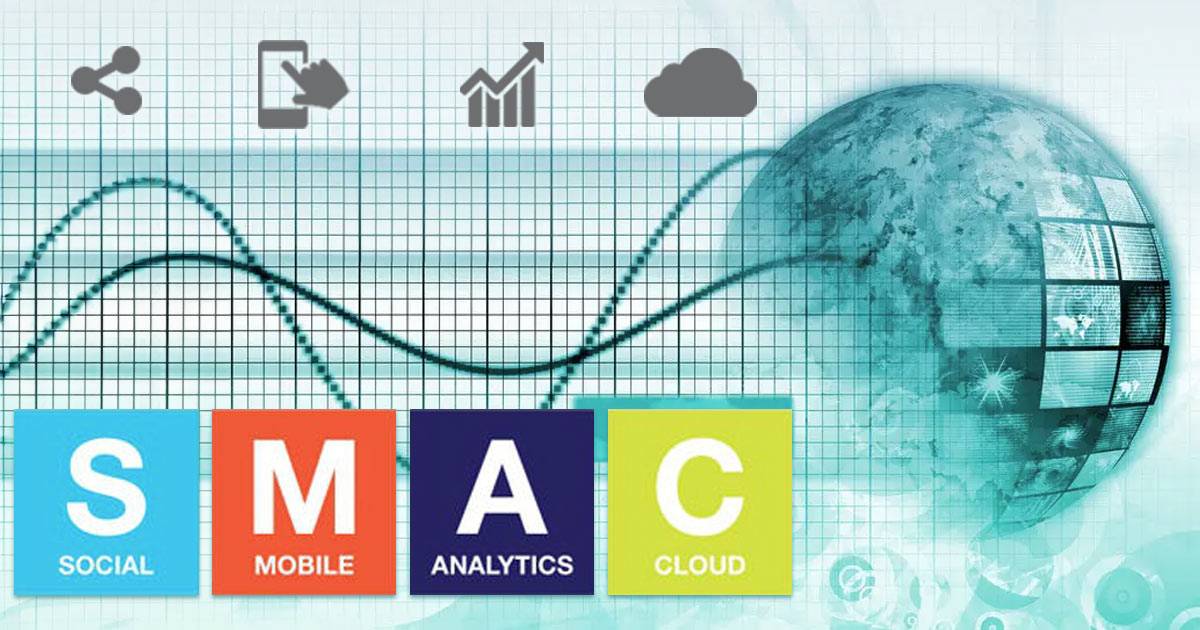What is SMAC: The Key Technologies Transforming the Digital Landscape

SMAC is a term that’s gaining prominence. It combines four major technologies: social, mobile, analytics, and cloud. Each of these components plays a crucial role in shaping the digital landscape, impacting how businesses operate and interact with their customers. SMAC is more than just a buzzword; it’s a strategic approach that enables companies to stay agile, innovate, and meet the demands of today’s digital consumers.
What is SMAC?
SMAC stands for Social, Mobile, Analytics, and Cloud. It’s a powerful framework that combines these four key technologies, each playing a crucial role in shaping modern digital strategies.
Social
“Social” refers to the use of social media platforms to connect with customers, understand their needs, and build a strong brand community. It’s more than just posting updates; it’s about developing meaningful connections that increase engagement.
Mobile
“Mobile” refers to the use of mobile devices such as smartphones and tablets. It is about providing mobile-friendly experiences that enable users to access information and services at any time and from any location.
Analytics
“Analytics” refers to the process of studying data to gain insights. It’s about using data to understand customer behavior, market trends, and business performance, and using that knowledge to make better decisions.
Cloud
“Cloud” refers to the use of cloud computing services to store and manage data, run applications, and deliver content over the internet. It’s about flexibility, scalability, and cost-effectiveness.
What makes SMAC so powerful is the way these four components work together. By combining social, mobile, analytics, and cloud technologies, businesses can create a seamless digital ecosystem that enhances customer experiences, drives innovation, and improves operational efficiency.
Benefits of SMAC Technology in the Business Industry
The benefits of SMAC (Social, Mobile, Analytics, and Cloud) are vast and impactful, offering companies a competitive edge in today’s digital age. Here are some key advantages:
- Enhanced Customer Engagement: SMAC enables businesses to communicate with their customers in real-time via social media and mobile platforms, resulting in deeper relationships and brand loyalty.
- Improved Operational Efficiency: By leveraging analytics and cloud technologies, organizations can streamline processes, reduce costs, and make data-driven decisions, leading to increased efficiency.
- Greater Flexibility and Scalability: Cloud computing allows businesses to scale resources based on demand, providing flexibility to adapt to changing market conditions and business needs.
- Innovation and Agility: SMAC promotes innovation by offering access to cutting-edge technologies and resources, allowing businesses to respond rapidly to market trends and stay ahead of the competition.
- Data-driven Insights: Analytics provide significant insights into customer behavior, market trends, and operational performance, allowing businesses to make more informed decisions and drive growth.
- Cost Savings: Cloud computing reduces the need for costly infrastructure expenditures, allowing organizations to pay only for resources used, resulting in significant cost savings.
- Global Reach: SMAC technology enables enterprises to reach a worldwide audience, removing geographical restrictions and extending market reach.
The integration of SMAC technologies provides businesses with a comprehensive approach to digital transformation, allowing them to innovate, increase productivity, and provide excellent customer experiences.
SMAC Meaning for Future Trends
As technology continues to evolve, the principles of SMAC will continue to shape future trends. The integration of social, mobile, analytics, and cloud technologies will be key to driving digital innovation and staying ahead in the competitive landscape. In the future, SMAC technology will keep getting better and bring some exciting changes:
- More Personalization: Businesses will use SMAC to offer things that are more personalized to each person. They’ll use data and social media to understand what people like and tailor products and services to fit their needs.
- Artificial Intelligence (AI): AI will become a big part of SMAC. It will make analytics smarter and help businesses make better decisions. For example, AI-powered chatbots will improve how companies interact with customers on mobile devices.
- Internet of Things (IoT): SMAC will work closely with IoT devices. These devices will send real-time data to businesses, which can help improve how things work and create better experiences for customers.
- Edge Computing: This means processing data closer to where it’s collected, which will make SMAC applications faster and more efficient, especially with the growth of IoT devices.
- Blockchain: This technology will make SMAC more secure and transparent, especially when it comes to storing data and handling transactions.
- Augmented and Virtual Reality (AR/VR): These technologies will keep improving, offering new ways for businesses to connect with customers. They’ll make mobile experiences more fun and social.
- 5G Connectivity: The roll-out of 5G networks will make SMAC even more powerful, with quicker speeds and more stable connections. This will expand the possibilities for mobile apps and IoT devices.
The future of SMAC looks bright, with these changes expected to make technology even more useful, improve how businesses operate, and create better experiences for everyone.
Understanding the Meaning of SMAC
SMAC is more than an acronym; it is a strategy for digital transformation. Businesses that embrace social, mobile, analytics and cloud technology can create new opportunities, increase consumer happiness, and drive growth. As we continue on the digital journey, SMAC will remain a cornerstone of innovation, guiding businesses toward a more connected and customer-centric future.
